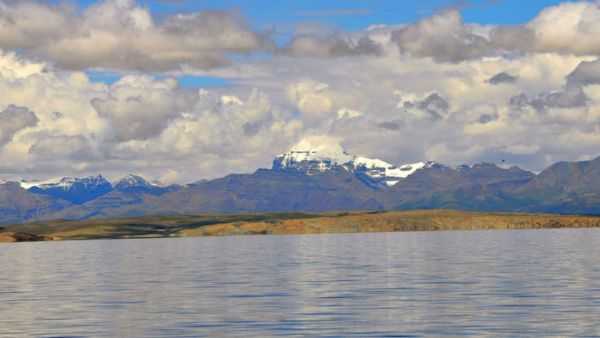
New Delhi: The Kailash Mansarovar Yatra is resuming after a gap of 5 years on June 30. Pilgrims will use the Lipulekh Pass during the yatra. Thousands of pilgrims will make the tough and ardous journey to the 18,000-feet-high Mount Kailash, located near Mandarovar Lake. The lake and the montain are revered not only in Hinduism, but also by Buddhists, Jains and people who follow the Tibetian Bon religion.
Lake Mansarovar and Mount Kailash
Lake Mansarovar is a freshwater body near Mount Kailash. It is located in the Ngari Prefecture of the Tibet Autonomous Region (TAR).The lake is situated at a height of 4,600 metres and is known as Mapam Yumtso, in local parlance. The belief maong Hindus is that Lord Brahma created the lake and it has purifying powers.
Mount Kailash is considered to be the abode of Lord Shiva. If it is revered by Hindus for this reason, the Buddhist refer to the 6,638-metre high peak as “Mount Meru” and consider it as the primary source of spiritual energy.
Jains on the other hand believe that their Tirthankara Rishabdeva attained salvation at a place called “Mount Ashtapada” which is located on this very mountain.
Routes to reach Kailash Mansarovar
The Kailash Mansarovar Yatra was suspended in 2020, due to the Coronavirus pandemic. Even after the pandemic, it could not resume due to tensions between India and China after the Galwan Valley standoff of 2020.
The talks to resume the yatra, began in December 2024. India and China finally managed to agree upon resuming th yatra, despite sharing no so cordial relations.
Devotees from India can take 2 routes to reach Kailash Mansarovar. They can either go via the Nathu La pass in Sikkim or Lipulekh Pass in Uttarakhand. The Nathu La Pass is located at a height of 4,310 metres and is the border between India’s state of Sikkim and the Tibet Autonomous Region.
The Nathu La Pass is fully accesible through vehicles. The distance to Mansarovar Lake through this route is 1500 kilometre. Devotees only need to trek for 35-40 kilometre and that too only for parikramas.
The second route, the Lipulekh pass in Uttarakhand, lies on a tri-junction of India, China and Nepal. The lake is nearly 50 kilometre from the border of Uttarakhand and Tibet Autonomous Region and the rough terrain makes the journey even tougher. Pilgrims who take this route have to trek for 200 kilometre.
People between the ages of 18 years to 70 years are allowed to undertake the yatra. It takes nearly 20 days for the yatra to conclude. All pilgrims must be physically and mentally fit and have an Indian passport.
This year India has granted permission to 750 individuals to undertake the yatra, reported Firstpost. This yatra will last from June to August.
-
Tech jobs aplenty in Dubai's AI boom – depending on your passport

-
Puri Rath Yatra stampede: Odisha minister sets 30-day deadline for administrative probe

-
VIDEO: Devotee claims cockroach found in Srisailam laddoo prasadam, Andhra Pradesh temple denies

-
VIDEO: Man Beaten Brutally For Objecting To Youths Misbehaving With Daughter In MP's Morena

-
GMB star sparks outrage as she backs BBC over Glastonbury hate speech shame
